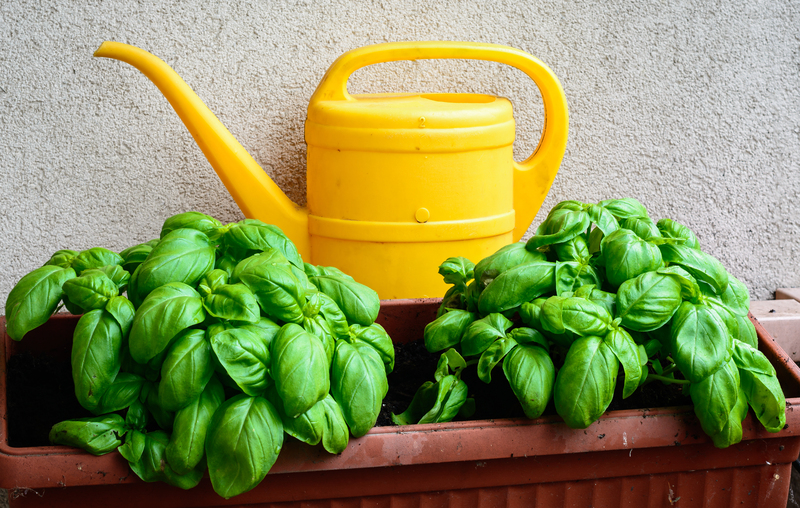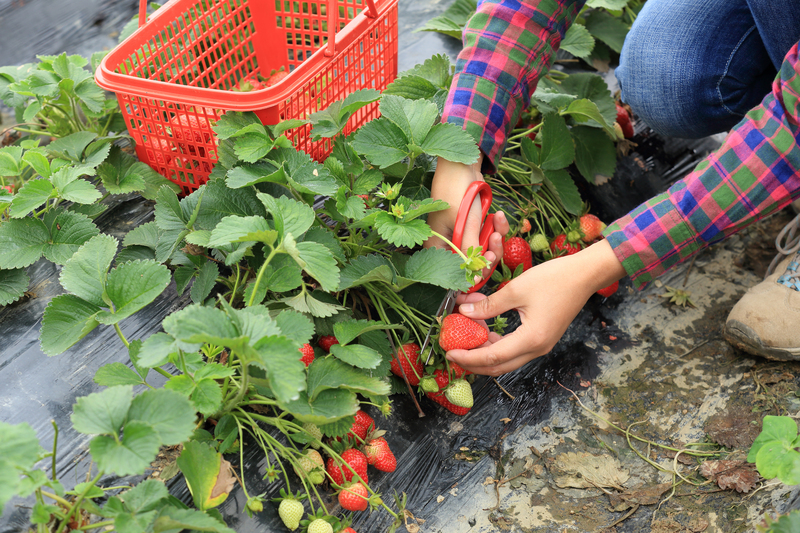Maximize Your Garden's Potential with Minimalist Budget Hacks
Posted on 03/07/2025
Maximize Your Garden's Potential with Minimalist Budget Hacks
Dreaming of a thriving, beautiful garden but worried about the costs and complexities? You're not alone! Many gardening enthusiasts feel limited by space, money, or time. However, with minimalist budget hacks, anyone can create an impressive and productive garden--all without breaking the bank. In this article, we'll dive into practical, sustainable, and creative ways to maximize your garden's potential while keeping things simple and affordable.
Why Choose Minimalist Gardening?
Minimalist gardening isn't just a design trend--it's a game-changer for gardeners everywhere. By focusing on essentials and purposeful choices, you can:
- Save money by cutting down on unnecessary purchases
- Reduce clutter, leading to a cleaner, more welcoming space
- Boost sustainability with eco-friendly practices
- Increase efficiency for less work and more yield
Set a Minimalist Mindset for Gardening Success
Maximizing your garden's potential on a budget starts with intention. Ask yourself: what do you want from your green space? Whether it's a bounty of vegetables, a sanctuary of flowers, or a combination, defining your goals helps eliminate distractions and focus resources where they matter most.

Practical Budget Hacks for a Lush Minimalist Garden
Now, let's get into the budget gardening magic! These tips deliver maximum impact with minimal resources.
1. Use What You Have: Repurpose & Reuse
- Turn household items into planters--old buckets, mugs, or tin cans make charming homes for herbs and succulents.
- DIY garden markers from stones, popsicle sticks, or broken tiles add personality and organization at no extra cost.
- Repurpose pallets into vertical gardens, compost bins, or simple raised beds.
*Minimalist gardens thrive on creativity--transform everyday objects into garden gold!*
2. Start Plants from Seeds
Buying mature plants gets expensive fast. To maximize your garden's potential on a budget, embrace seed starting:
- Seeds are affordable and offer a wider variety than nursery plants.
- Seed exchanges in your community or online can save you even more money.
- Re-use containers for seed starting--egg cartons, yogurt cups, and plastic takeout trays all work well.
Tip: Share excess seedlings with neighbors to build community and diversify your garden without extra costs!
3. DIY Fertilizer for Thrifty, Healthy Gardens
Store-bought fertilizers can be pricey. Instead, maximize your gardening potential using budget-friendly homemade options:
- Compost kitchen waste--fruit peels, coffee grounds, eggshells nourish your soil for free.
- Banana peel tea: Soak banana peels in water for a few days, then use the liquid to water your plants for a potassium boost!
- Epsom salt mix: Dissolve a tablespoon in a gallon of water to gently supplement magnesium and sulfur.
4. Choose Compact, High-Yield Plants
To maximize your garden's productivity, pick plants that deliver the most bang for your buck. Opt for:
- Cut-and-come-again greens (lettuce, spinach, kale) for extended harvests.
- Dwarf or bush varieties of tomatoes, beans, and peppers that thrive in containers and small spaces.
- Perennial herbs (chives, thyme, oregano) returning yearly with little effort.
Remember: A few well-chosen, high-performing plants can produce much more than a cluttered hodgepodge!
5. Master the Art of Companion Planting
Companion planting means growing certain types of plants together to help each other thrive. This practice can:
- Improve pest control naturally
- Reduce overcrowding and maximize space
- Boost yields and plant health
For instance, plant basil near tomatoes to repel pests, or marigolds alongside vegetables to deter nematodes. Minimal investment, big benefits!
6. Practice Smart Watering
- Mulch generously with grass clippings, wood chips, or straw to conserve moisture and reduce watering frequency.
- Collect rainwater using a barrel or even buckets -- it's free and eco-friendly.
- Water early in the morning or late afternoon to reduce evaporation.
Saving water means saving money, and healthier plants result from consistent, efficient hydration!
7. Opt for Simple, Low-Maintenance Design
A clutter-free garden isn't just pretty--it's practical. Simplify your garden layout by:
- Grouping plants by their water and sunlight needs
- Creating easy-to-navigate paths with salvaged stepping stones or gravel
- Minimizing decor and maximizing useful features such as vertical trellises or multi-purpose benches
Less really is more--especially for maintenance!
Advanced Minimalist Gardening Techniques
Vertical and Container Gardening
Maximize small spaces using vertical gardening tricks:
- Hang shoe organizers filled with soil as living herb walls.
- Stack planters or use tiered plant stands for more yield in less ground space.
- Grow up, not out: Use trellises or repurposed ladders to let climbing vegetables like peas, cucumbers, or beans soar.
Pro tip: Container gardening lets you move plants to catch optimal sun, and you can use buckets, bins, or anything that holds soil!
No-Dig and Lasagna Gardens for Frugal Success
- No-dig gardening saves money, time, and soil health--just add layers of organic materials on top of the soil and plant directly.
- Lasagna gardening involves stacking newspaper, compost, and mulch to build fertile, weed-resistant beds from almost nothing.
No tilling, no fancy tools--just rich, productive soil and savings!
Seek and Share Resources
Don't hesitate to maximize your minimalist garden with help from your network:
- Borrow tools from friends and community sheds rather than buying new.
- Find free or discounted plants at local plant swaps, social media groups, and "end of season" sales.
- Share surplus harvest--build relationships and create a supportive gardening community.
Common Mistakes--And How to Avoid Them
- Over-planting: More plants don't always equal more produce. Prioritize quality over quantity.
- Ignoring soil health: Healthy soil--fed with compost and organic matter--is the real secret to garden abundance.
- Buying unnecessary gadgets: Stick to basic tools; many "must-haves" end up as clutter.
- Neglecting maintenance: Regular, simple routines make gardening easier and more rewarding.

FAQs: Minimalist Garden Budget Hacks
What's the cheapest way to start a new garden?
Start small with seeds, use recycled containers, enrich soil with homemade compost, and focus on a handful of productive plants.
Can I practice minimalist gardening in an apartment?
Absolutely! Use window boxes, balcony planters, and vertical setups. Herbs, lettuces, and dwarf veggies can thrive in limited spaces.
How do I keep my garden thriving with minimal effort?
Pick resilient plants, mulch well, group according to care needs, and keep the design simple to cut down on maintenance.
Final Thoughts: Cultivating Abundance the Minimalist Way
The journey to maximizing your garden's potential with minimalist budget hacks is as rewarding as the harvest itself. By embracing simplicity, thinking creatively, and making the most of every resource, you'll discover that a garden doesn't need to be expensive or elaborate to thrive.
Start small, dream big, and let your minimalist garden surprise you--all while keeping your wallet (and the planet) happy!
Ready to create your own affordable, sustainable, and sensational minimalist garden? Grab those seeds, repurpose that old bucket, and grow smart--your budget and the earth will thank you!

